Understanding the Site
General Climatic condition in india
- Direct sunlight mostly throughout the year.
- Heavy rainfall
- Mostly a four season year
- Hottest places on earth are located in this zone.
Kochi_India
Kochi is located in the southern state of Kerala. It is one of the important ports of the country. The city is a collection of islands connected through inland waterways. Kochi being a coastal town, has a mixed landscape varying from highlands to coasts The general climatic conditions of the city are:
- Tropical climate- with significant rainfall throughout the year.
- Average ambient temperature is around 27 deg.C
- High humidity levels at 82%.
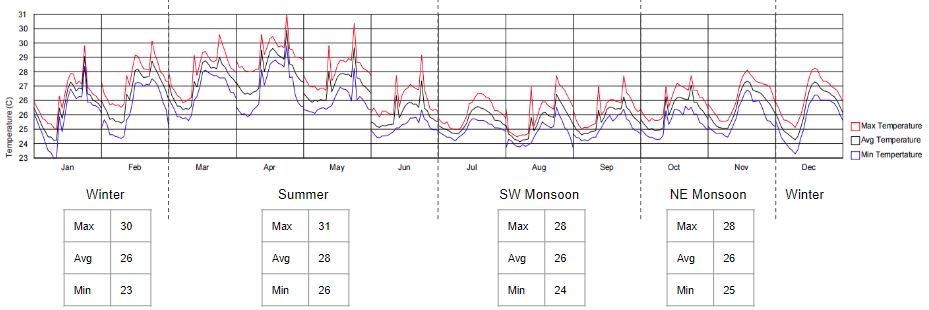

Understanding the Urban Environment
- Densely packed Setting
- Medium to High Rise Buildings only in the CBD area
- Large tree covers of native trees
- Narrow- two lane roads
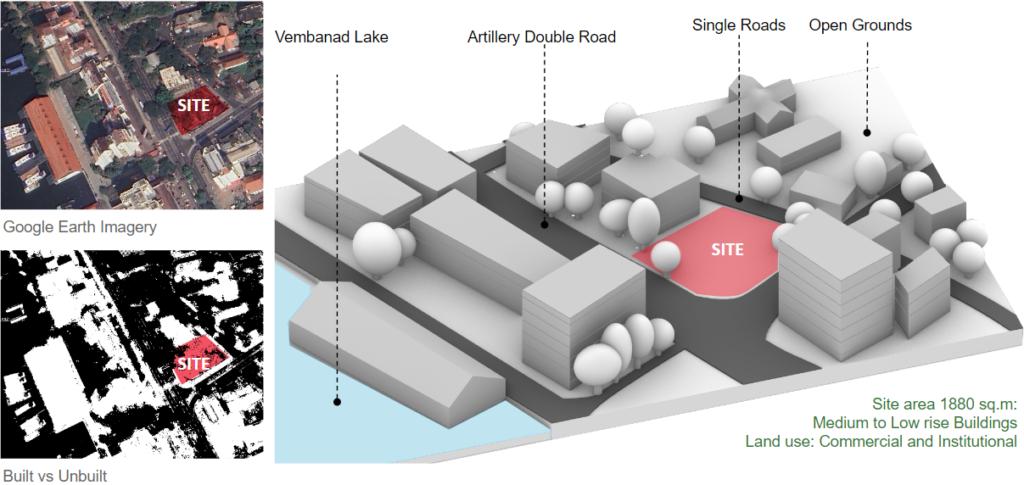
How can vernacular principles improve the real estate of the city?
In our ongoing research, we aim to explore the integration of vernacular principles from traditional architecture into contemporary urban commercial structures. Our objective is to enhance building performance by promoting energy conservation. To substantiate our research statement, we employ the specified tools.

Design analysis
In our analysis, we’ve juxtaposed a conventional commercial building with a design proposal integrating vernacular techniques. Both structures maintain similar footprints to ensure parity in our assessment. The standard module comprises 6 floors and spans 6100 square meters, whereas the design proposal features two blocks with heights of 12 and 6 floors, respectively.
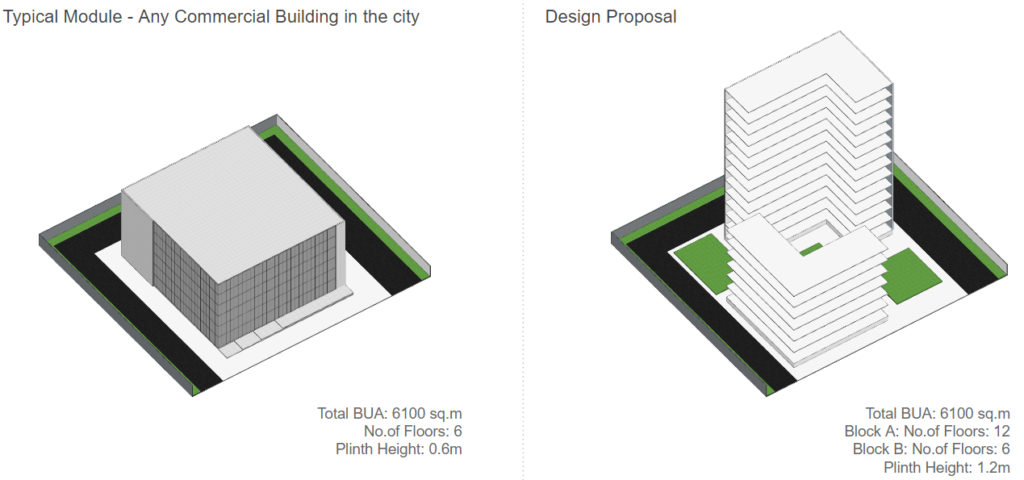
Wind Rose analysis

The initial windrose analysis indicates a prevailing northwest wind direction throughout the year, coinciding with the arrival of the monsoon season. The peak wind speed recorded reaches 7.78 meters per second, with an average speed of 4.9 meters per second.
Orientation and Form Generation
Infrared-Wind Speed Analysis
Using infrared analysis, we observed that creating a courtyard and opening the Northwest-Southeast side enhances cross ventilation. This design significantly reduces hotspots compared to a typical cuboid building, where hotspots typically occur, particularly in the southwest corner.
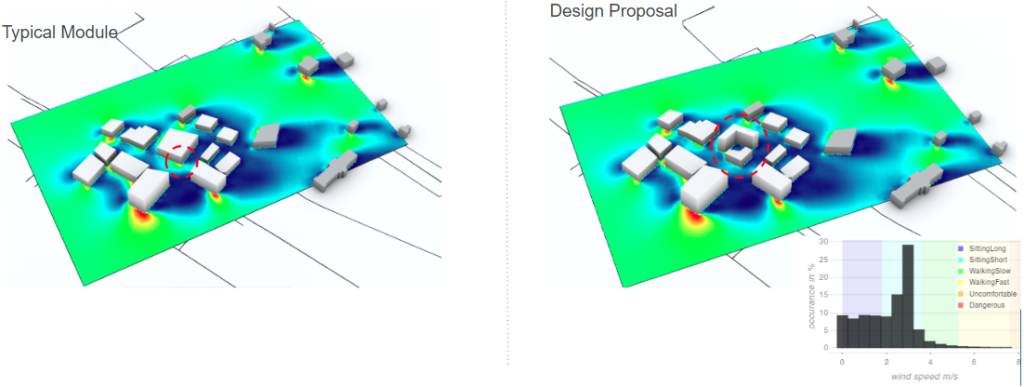
Infrared-Wind Comfort Analysis
Courtyard spaces have been tested for wind comfort and fall within the comfortable zone. To enhance the courtyard experience, further curving of edges or inclining of planes is suggested.
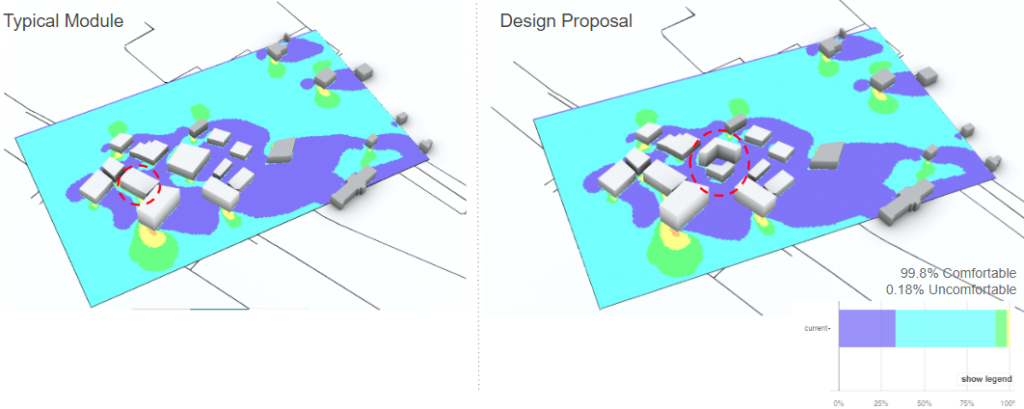
Annual Outdoor Thermal Comfort UTCI
In the coastal city, high humidity around 80% and regular precipitation are typical. It maintains a consistent, slight heat year-round with uncomfortable midday temperatures. The role of wind is crucial for comfort in this environment.
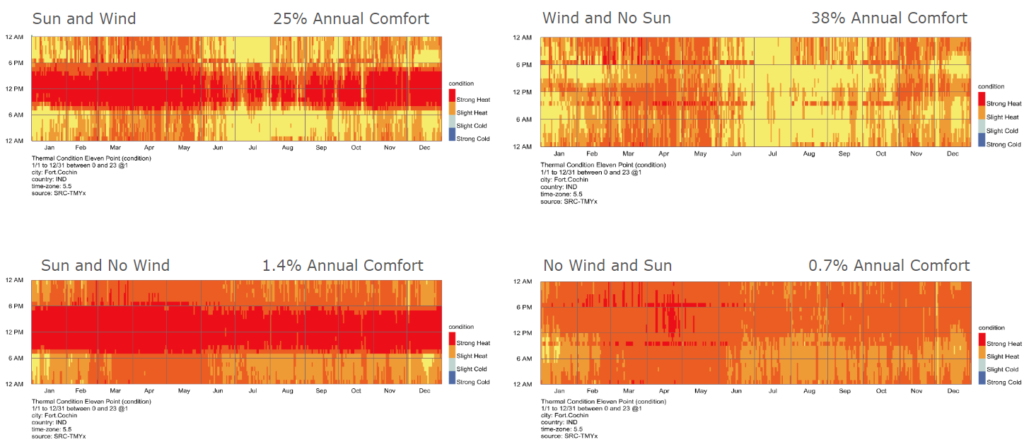
Landscape Integration
UTCI material mapping
UTCI material mapping was employed to assess the significance of landscaping. In a standard commercial building predominantly featuring concrete pavers, high temperatures averaging 26 degrees Celsius were observed. However, incorporating a Central Courtyard and achieving a balanced mix of softscape and hardscape improves the thermal comfort of the building surroundings, resulting in an average temperature one degree lower.

Contextual Analysis
Radiation_Context Level
Positioned at 9.9 degrees North Latitude, the horizontal surfaces and South Facade are exposed to an average of 100 watt-hours per square meter, representing harsh sunlight. Specifically, incident radiation on the south and west facade indicates an average of 220 hours of exposure. The sun’s direction spans from 0 to 30 degrees east to west consistently throughout the year
Direct Sun Hours_Context Level
The East and West sides endure maximum sunlight exposure, averaging 60 kilowatt-hours per square meter. With temperatures ranging from 23 to 32 degrees Celsius, it’s essential to implement shading devices to mitigate heat gain effectively
Orientation and Roof Geometry
Incident Radiation and Direct Sun Hours
In a conventional building, neglecting orientation leads to high temperatures and 300 hours of roof radiation. The proposed design minimizes surface area on east/west sides. Introducing a sloped, tiled roof reduces total surface area and enhances thermal conductivity. This design outperforms a flat roof in distributing radiation and sunlight hours.
Typical module
1
Flat roof
Sloped roof
Orientation and Facade
Daylight Factor_Windows
A typical building with glass facade, all though provides ample light in the floor area, it heats up the space and as tested will have an average daylight factor of 1.38. In the design proposal large windows are provided for good cross ventilation and the width of the building geometry is narrow, to achieve max benefit of natural daylight.
Glass Facade
No Shading
Average Daylight Factor:1.38
Windows: 3mx3m
No Shading
Average Daylight Factor:3.69
Daylight Factor_ Shading devices
Vertical fin system outperforms the horizontal overhangs, as the daylight distribution is better in the internal spaces and hotspots at the boundary are not created.



Wind Analysis_Eddy 3D
By providing central courtyard space aligning with the prevailing wind direction we are achieving comfort airflow between the buildings.
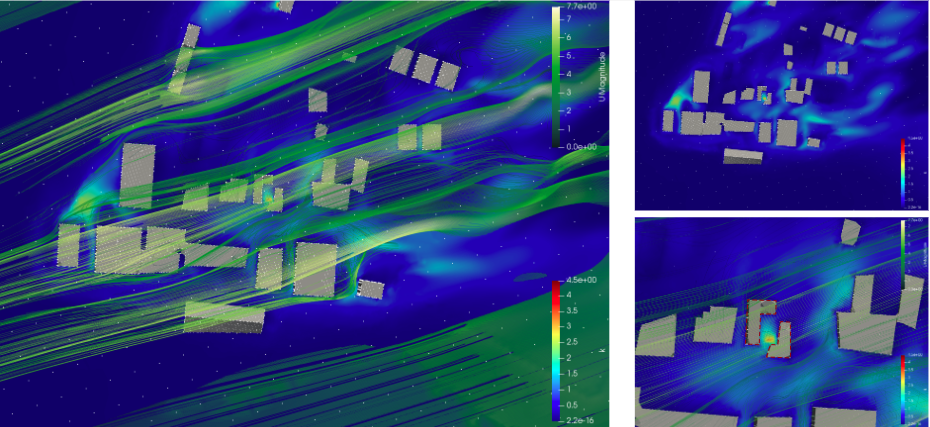
Conclusion
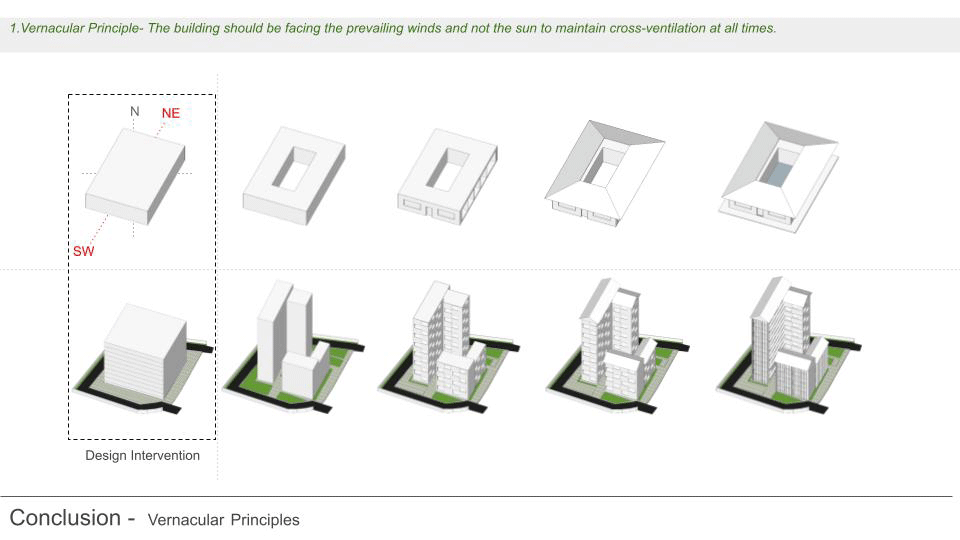
Our research emphasizes incorporating vital vernacular principles. For optimal cross-ventilation, the building should face prevailing winds, not direct sunlight, suggesting a southwest and northeast orientation.
The second principle is to create Courtyard spaces to induce continuous air movement.
Windows should be of maximum openable area and large vents to allow a lot of air to pass to provide thermal comfort.
Sloping roof to avoid the accumulation of rainwater on the surfaces. The high pitched roof maximizes pressure difference to optimize airflow.
Last But not the least, High plinth for flood protection. Verandahs or balconies to cut direct sunlight. Canopies, louvers and overhangs for sheltering should be provided to avoid direct sun radiation.
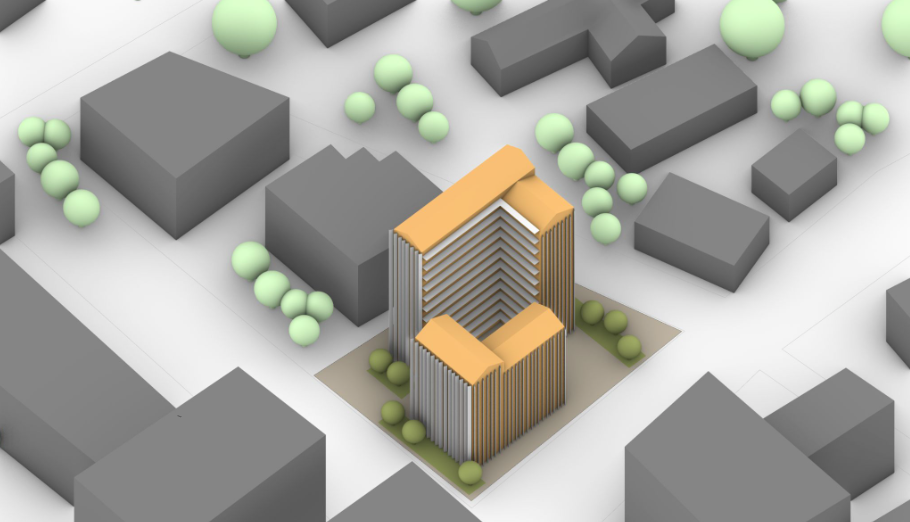
Refined model
The culmination of our studies demonstrates that employing straightforward vernacular design techniques in urban environments can lead to significant enhancements. By maintaining the same footprint, these techniques offer the potential to boost revenue by reducing operational building costs.

